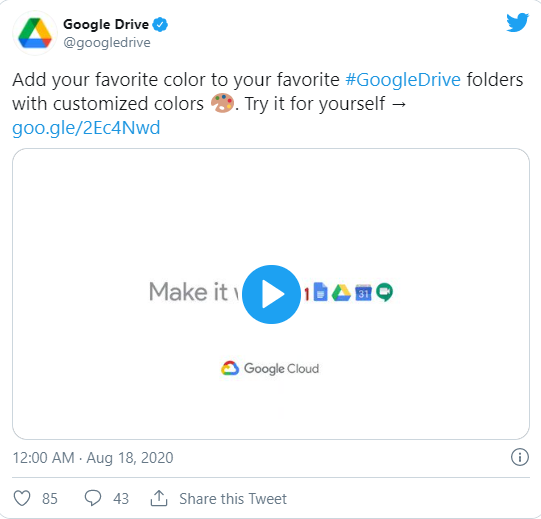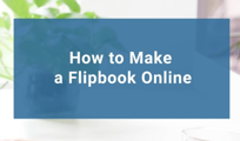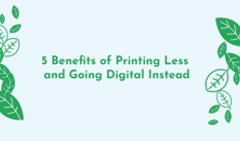Visual content has become the most popular way to engage users online. With more content being generated every minute, marketers need to be creative to attract customers.
That’s where visual communication comes in. Incorporating a visual in your content can cut through the noise online and make your content more memorable. The goal isn’t just to attract users to your content—you also want them to engage with it and with your brand. Visuals add interactivity to content and improve brand retention.
According to Hotjar’s heatmap analysis of their post, users spent more time focused on the image on their page than on anything else.
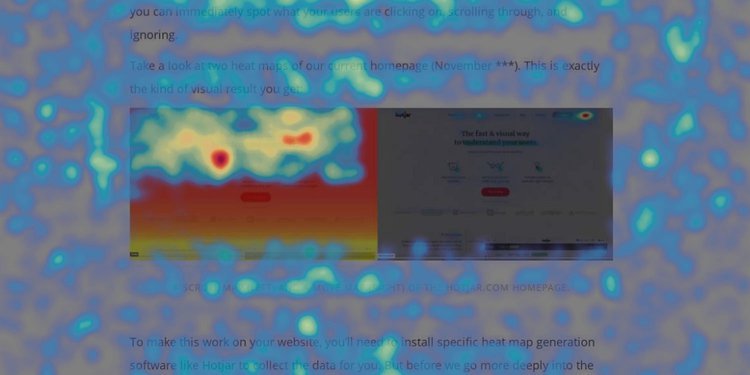
Source: Hotjar
So visual content brings the kind of engagement that brands want across all platforms. This guide will explain how they can achieve it.
Why is Visual Content Marketing Important?
Think back to the last time you read a piece of content that contained more text than visuals. How hard was it to read that post and how little did you retain? On average, users read only 20-28% of the text on a webpage. But they retain 65% of the visual information they encounter.
It’s becoming harder to capture users’ attention. When consumers are confronted with huge blocks of text, they immediately clock it as a labor-intensive process. On the other hand, adding visuals gives the eyes a break and adds context to the information. So in the long run, visual content marketing improves engagement and conversion rates while reducing bounce rates.
What are the Different Types of Visual Content?
Numerous kinds of visual content can be generated online. But seven broad categories attract the most attention today. See a breakdown of these types of visuals below.
#1 Data Visuals
Stories have been an integral part of human life and culture. But so has data. Especially over the last year, we have seen how much data powers content.

On its own, data can be confusing and overwhelming, but data visuals can condense large amounts of information to share patterns and connections with users. This is why storytelling through data has become a mainstay in visual content marketing, as the below graphic explains.
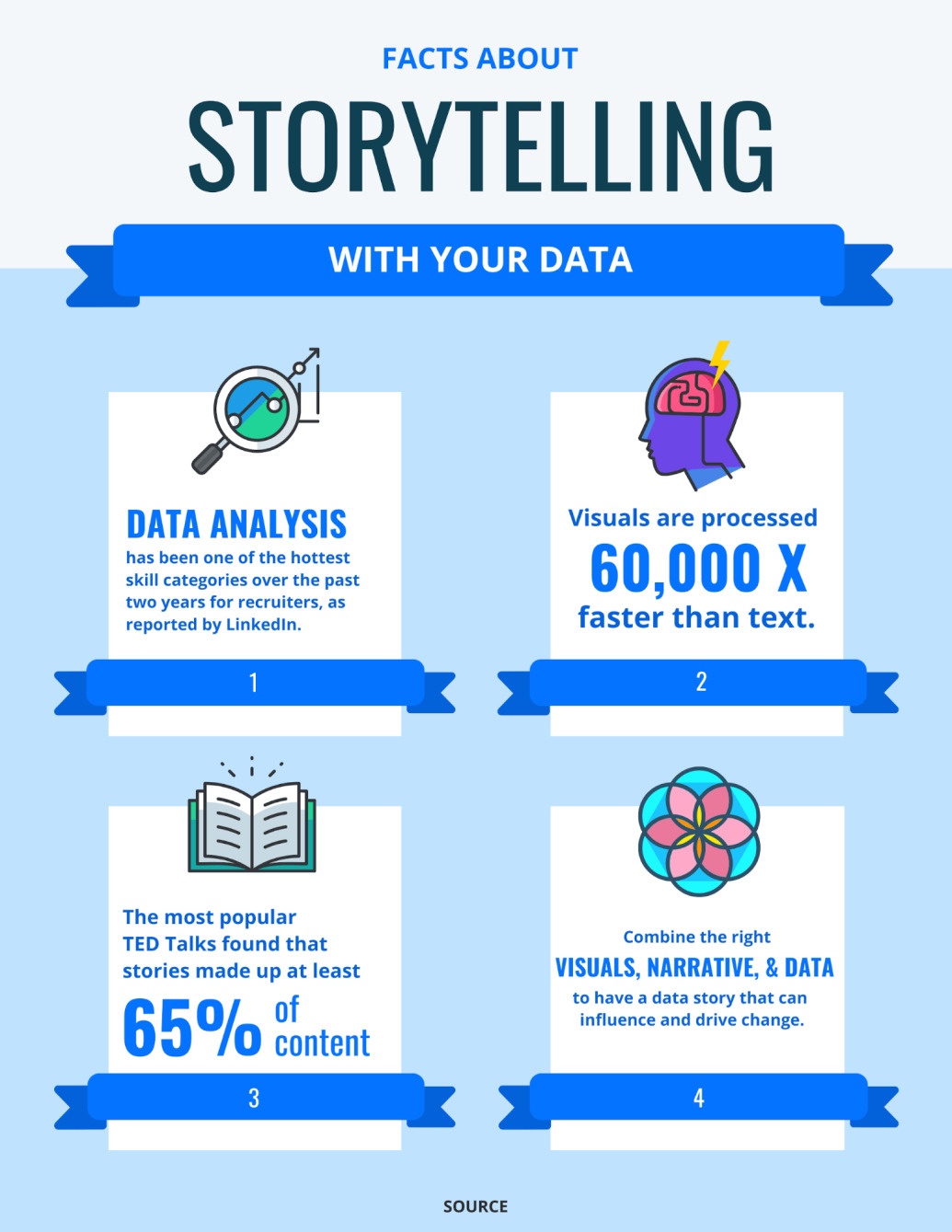
Source: Venngage
Remember, huge groups of data may be interesting to the people collecting it—but one can’t expect consumers to understand it without context. Visuals make data more accessible for everyone. When a user lands on a page, you don’t want to overwhelm them with facts: use data visuals to maintain a user’s interest in your content.
Creating data stories can be complicated but marketers can use an online graph maker to transform their data into memorable stories.
#2 Flipbooks
Visual content creation is about dynamism—this means turning static media into something interactive and engaging. That’s what flipbooks can do.
How many times have you received a PDF that takes forever to download? And then you need to click through each page to read the content. Online flipbooks are a great way to turn static PDF documents into dynamic and interactive content. They are easy to create, and they improve the viewing experience for users.
For instance, check out this engaging and bright flipbook.
Create yours
Another convenience of flipbooks lies in how easy it is to share them online. Unlike documents that can’t be transmitted to large audiences, flipbooks can be shared on multiple platforms: you can send them via direct links, embed into a website, or share on social media in a few clicks.
#3 Infographics
Alongside data storytelling, infographics are another form of visual content that can attract audiences and boost conversion rates. Infographics have gained popularity because they share varied types of information in extremely visual ways. They do this by combining text, images, data visuals, icons, and fonts.
Due to the amount of information that an infographic can contain, this type of visuals has varied uses. It can be used for the following purposes:
- Enhancing a blog post
- Link building
- Repurposing content for social media
- Sharing as a newsletter
- Marketers don’t have to create complicated graphics from scratch. There are online resources available for them to customize circle infographic templates, like the one below, for their needs.

Source: Venngage
#4 Live streams
The world has moved online due to the global pandemic. This has made live streams more necessary than ever before, according to video marketing trends. Going live is a great idea for YouTube marketing—for instance, check out this Apple live stream.
Instagram and Facebook also include live features alongside their Stories facility. Twitter has recently added Fleets to their repertoire.
How can marketers leverage live streams? Here are some top uses:
- Going behind the scenes
- Interviews
- Online tours
- Product demos
- Sneak previews
- Recruitment videos
- Webinars
Videos require higher production values to engage clients compared to live streams, which means higher investment costs. So this isn’t feasible for small businesses. On the other hand, live streams require little more than a laptop’s working camera and microphone. Hence their popularity among businesses of all sizes.
#5 Memes
Memes have become an online language of their own. It isn’t surprising that marketers have found success by using memes in their visual content strategy.
Memes help to lighten the mood, which is why people enjoy them so much. Businesses have often believed that they should appear aloof and serious but this no longer works. It’s more important now for businesses to create personal connections with their customers, and memes can help them do that.
Since memes are already recognizable and tell a story without explanation, brands can leverage them to attract customers and build relationships, like BarkBox has been doing.
Source: BarkBox Twitter
#6 Presentations
Another fall out of the move to remote work is how many meetings and conferences now need to take place online. But anyone who has sat through these meetings knows that there is nothing worse than listening to a person speak non-stop for an hour.
That is why designing presentations has become an essential skill for marketers. These presentations can then be used for customer acquisition. Presentations can also be converted into slideshows or videos to be shared on social media. This is a visual content strategy that works in both the B2B and B2C spheres.
#7 Screenshots
Education is a huge part of visual content marketing. This is why brands should spend time creating tutorials and walkthroughs. What’s an essential ingredient of these tutorials? Screenshots.
Instead of writing long blocks of text explaining how to use a system or product, marketers can take a screenshot to display what they are doing. Another option is to take a video of the screen. Screencasts, like the example below, do the same thing as screenshots but include motion.
Source: Google Drive Twitter
Keep in mind that adding annotations to screenshots and screencasts gives more detail to the tutorial.
Best Practices for Visual Content Creation
Content and SEO marketing trends are constantly changing and best practices for visual content creation have to keep up. Here are the top tips for designing visual content that actively attracts customers in 2026.
#1 Set Goals for Your Visual Content
Let your content strategy guide your visual content. This means designing visuals that align with your quarterly and annual goals.
Marketers should ask themselves the following questions when goal-setting for visual content:
- Who is the audience for this visual?
- Does the content solve a user problem?
- What is the purpose of creating and distributing this visual?
- How does the visual align with the brand’s mission and vision?
- What keywords will be included in the alt-text?
The answers to the above questions will help define the metrics for examining the success of visual content creation.
#2 Use Branded Visuals
Visual content is one of the easiest ways to showcase your brand and build awareness for your company. After all, logos, fonts, and colors are the essentials of business branding.
It takes between five and seven brand impressions online for a customer to recall your brand, thus adding branding elements to as many visuals as possible is a necessity.
#3 Follow Design Best Practices
Visuals need to follow graphic design principles. This way, you’ll create imagery that customers can immediately connect with.
The graphic below explains what the top six design principles are.

Source: Venngage
Here are some other general rules to keep in mind:
- Don’t overstuff your visuals—maintain white space around elements
- Keep color contrast and combinations in mind so the visual is more accessible
- Use a maximum of three fonts—any more will make your copy confusing
- Use image annotation tools to share design markups with collaborators via links
These principles of design will become easier to incorporate into visuals with practice and feedback.
#4 Give Visuals Human Impact
Picture this: you want to buy a microphone. Your research leads you to two brands that sell microphones. One features an image of the mic. The other of a happy podcaster with their mic. Which would you click on? If you’d choose the latter, you aren’t alone. People are drawn to other people more than to abstract concepts.
Featuring people in your visuals is a great way to create viral marketing campaigns, like Coca-Cola’s 2020 Christmas ad that put people and not their brand at the center of their message.
#5 Incorporate User-Generated Content
Another way to create human impact is by incorporating user-generated content in visual marketing campaigns. UGC, like Joules’ post for National Pet Day, creates an empathetic connection between brands and their consumers.

Source: Joules Instagram
Use a Variety of Visual Content to Reach a Diverse Audience
Marketers can use our visual content guide to understand why visual marketing is necessary to reach audiences in 2026.
We have also shared the top seven kinds of content that marketers can design:
- Data visuals
- Flipbooks
- Infographics
- Live streams
- Memes
- Presentations
- Screenshots
Stick to the best practices for designing content so that your visuals make the biggest, most memorable impact on your consumers.
Author's bio:
Ronita Mohan is a content marketer at Venngage, the infographic and design platform. Ronita regularly writes about digital marketing, data visualization, design, and small businesses. Twitter: @Venngage

